The enfant terrible of the bluefin tuna lurks in Murcia
Summary:
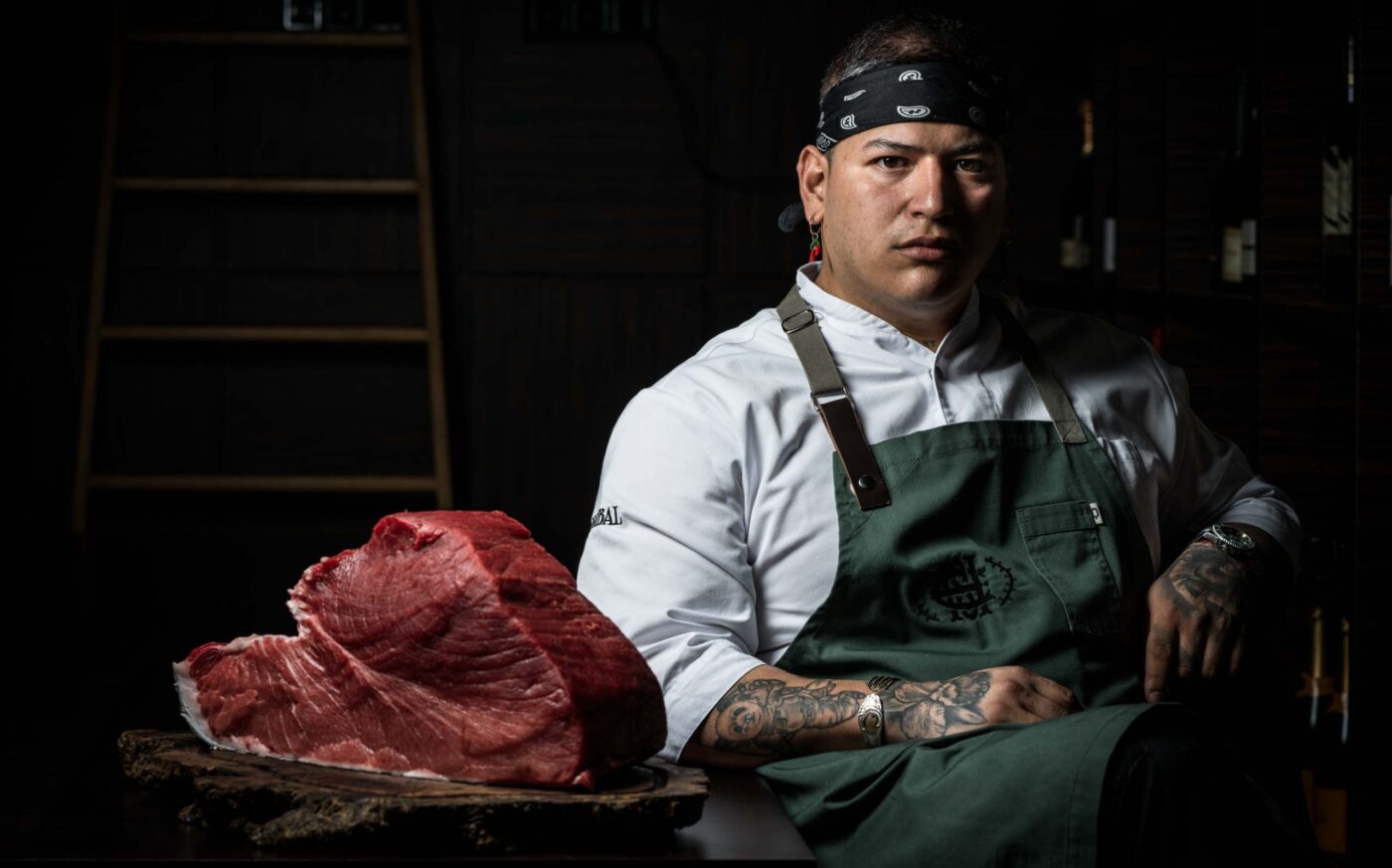
A logbook by Sensei Hiroshi Umi.
Kitchen management: well-travelled and versatile. Succulence: supreme. Surprise factor: superlative, gigantic, the kind that has you licking your lips, and rushing to tell all your gourmet friends that “you have to come and try this”. How could one suspect, how could one imagine that half hidden away among quite “dated” shops on the outskirts of Murcia, almost at the university campus, this young man would be working his craft with such daring and verve?
Our protagonist is barely 31 years old, has lived a life that Netflix could make a series out of, and has a culinary drive smoked with fire, charcoal, fusion and memory. He has placed bluefin tuna on his fiery altar, because for Colombian Sebastián López, no other product is so representative and subtly varied as our oceanic titan.
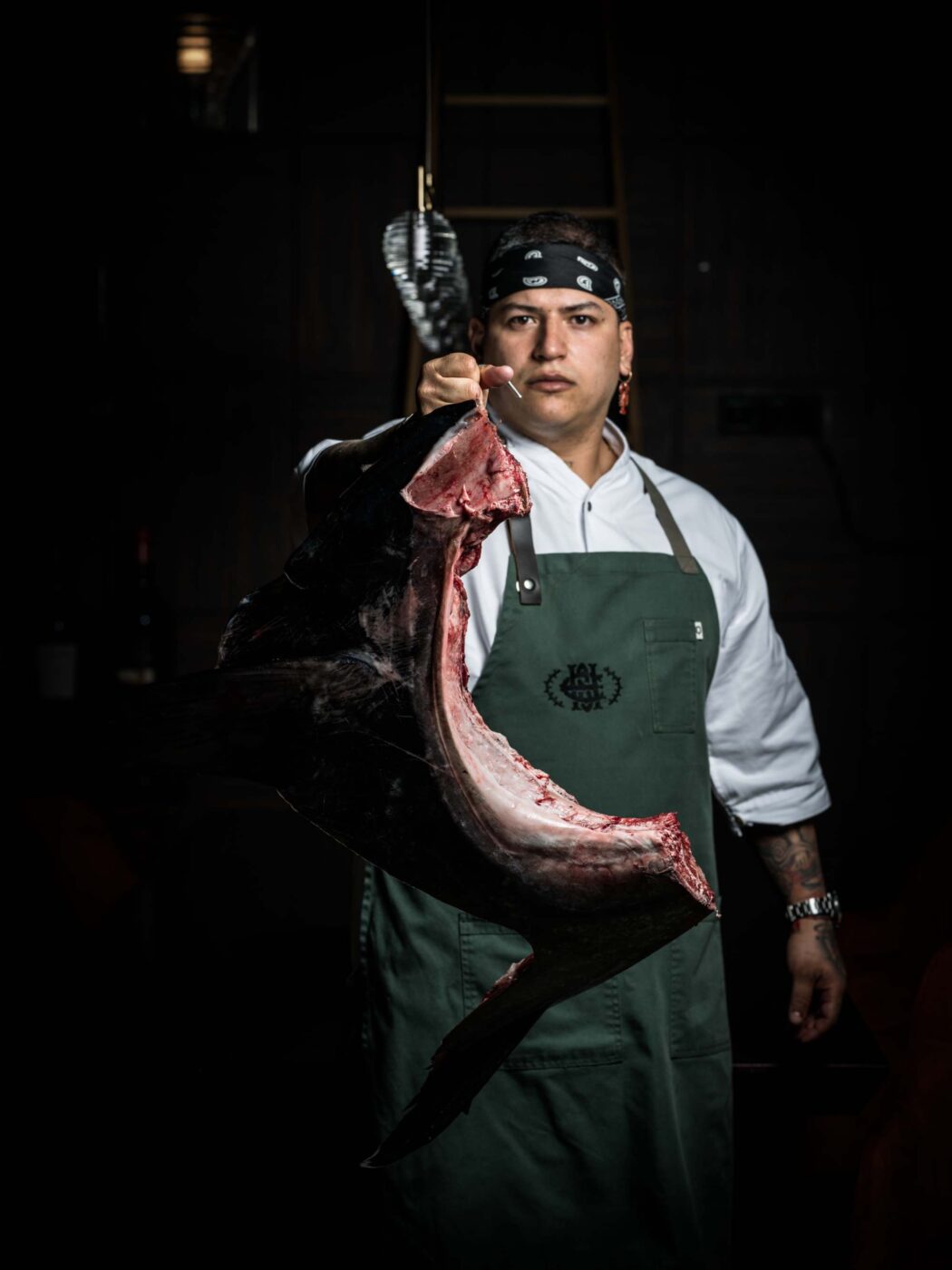
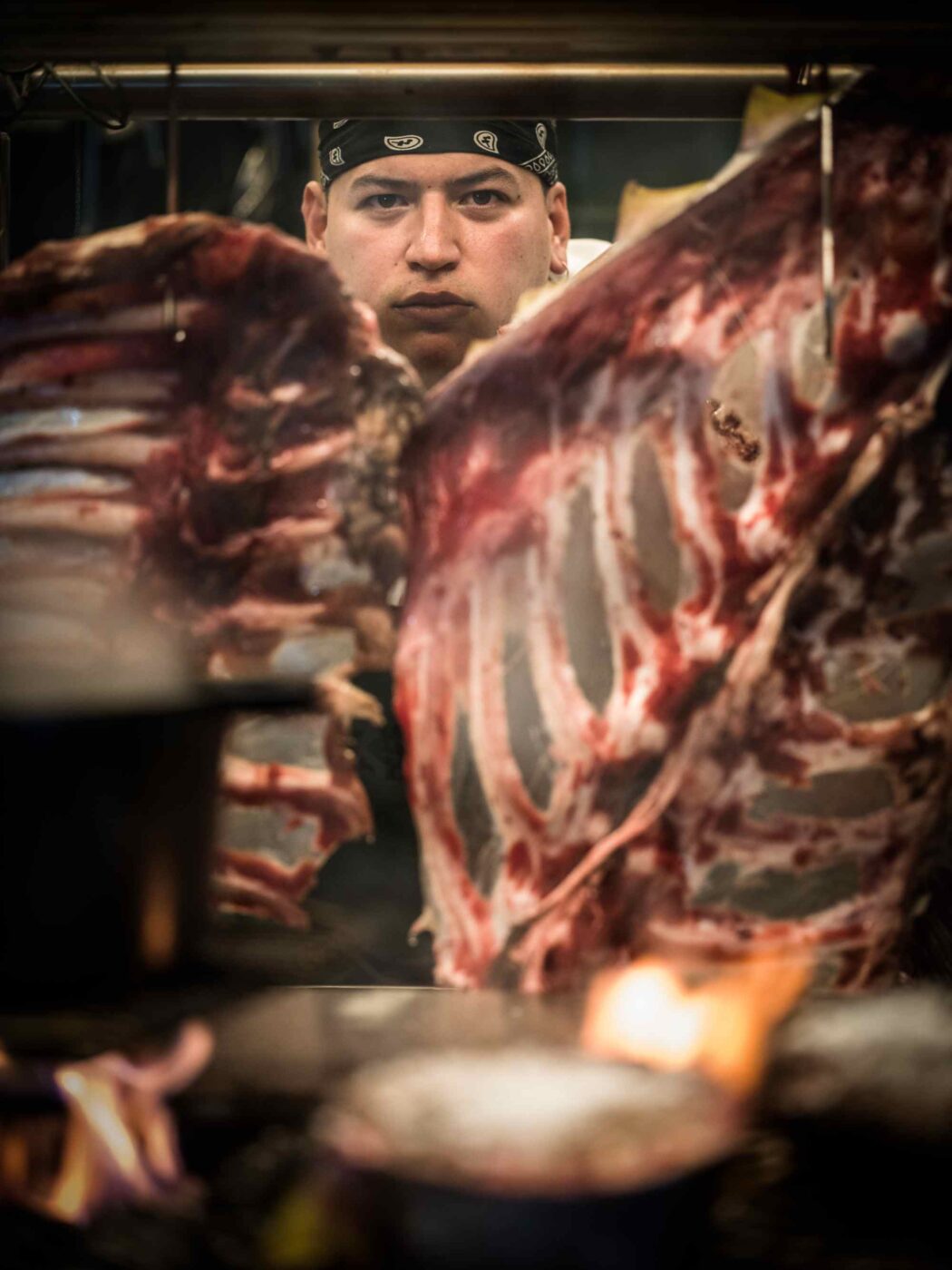
Hannibal: Fusion without confusion.
We are talking about Hannibal, a recently opened restaurant which could (and should) make some fantastic culinary noise. For the concept. For the ingredients. For the technique and venue. “I’m from Cali, the city of salsa, and was born in a kitchen. We had a restaurant, a piqueteadero serving 3,000 pasties a day, preparing traditional Colombian cuisine for more than 80 years. Because of family circumstances and the violence in the country, we had to leave,” explains Sebastián López.
“Hannibal started out as a catering company, giving people a real gastronomic experience at home. Today its cooking reflects other places where I have worked. We don’t improvise, we don’t do anything that we don’t understand and haven’t experienced ourselves. There are smatterings of Peruvian flavour, North American in terms of stews and smoking, Colombian touches… My mother even makes the pasties the same way my grandmother did, in a pyramid shape so that the points go crispy. We also have local products and regional tradition. Since we are in Murcia, we like to keep things in the family. As I say, fusion without confusion, wild elegance and elegant fire. Because fire is primordial, almost everything is chargrilled or smoked. We have a kamado, an Ofyr, which is an open wood-fired stove, and a Basque grill. We cover every aspect. Pickled, salted, fermented… We make them ourselves. We do almost everything. The products arrive ultra-fresh from the market garden, because there are real riches here, similar to South America. We have direct contact with the suppliers of our lamb, bluefin tuna… I know its whole history. I’ve known the people at Fuentes for a long time, and trust them completely,” explains the chef, whose partner and right-hand man is Juanjo Arias, a consummate specialist coffee barista who also serves as sommelier and handles the wine cellar.
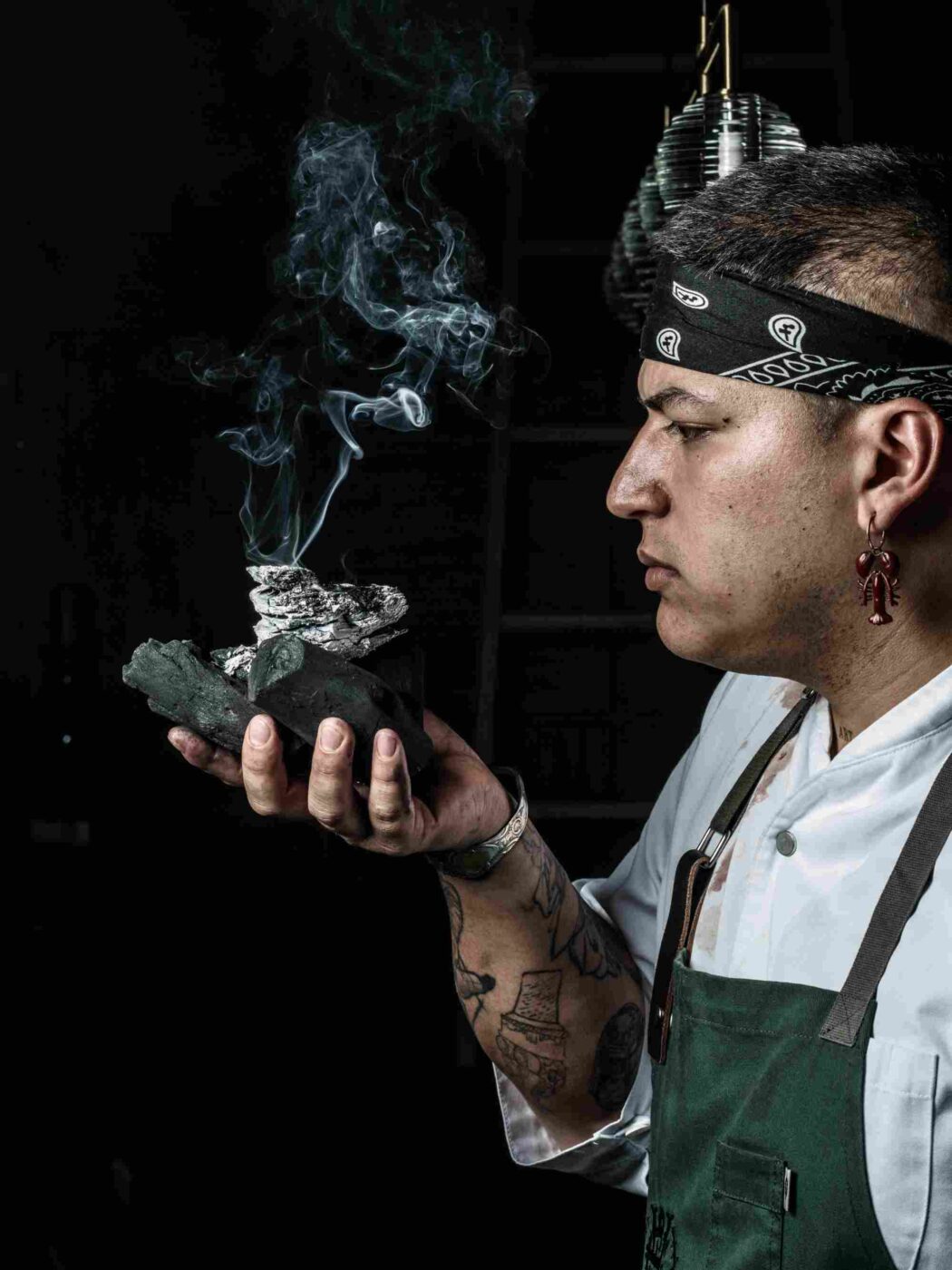
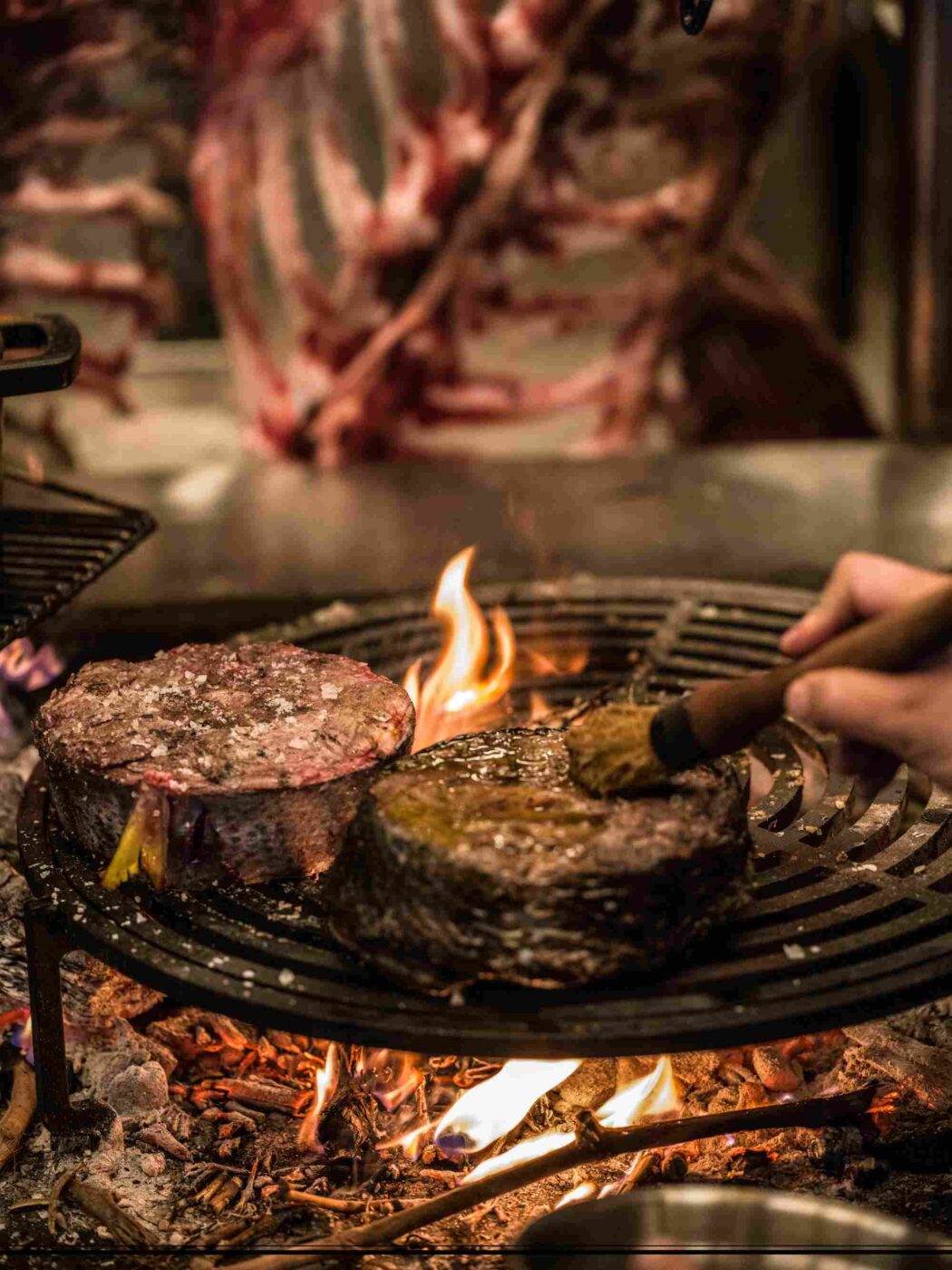
A festival of tuna
They open fire with delicious family pasties, humbly profound, profoundly humble. A shrimp patacón reveals his roots and serves as the second family emblem. These two morsels are the precursor for a prodigious festival of tuna. When the huge backbone arrives, from a fish recently caught at sea, Sebastián poses for a photo straight away, holding it up in the air as if he had finished the beast off with his own hands, and detailed its anatomy with the precision of a forensic scientist.
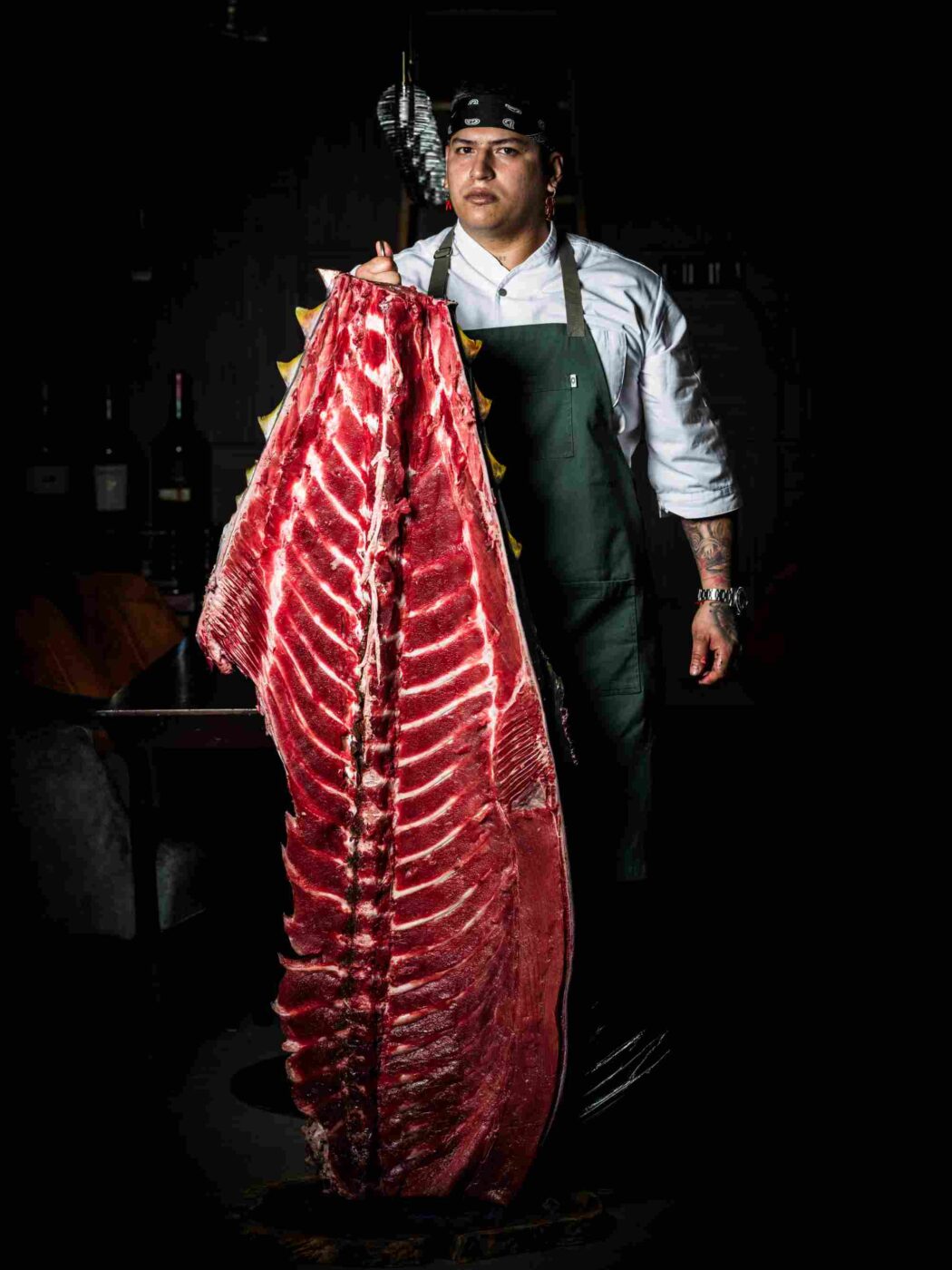
Straight after that, he lovingly sets about the liturgy of the nakaochi, in other words scraping out all the intercostal lean meat with a spoon, to make a fantastic tartare, served on the vertebrae themselves. In a flash, the bones are left as clean as if ravenous wild beasts had stripped their prey of every scrap of flesh. “Have you tried the marrow? Here, it’s like a spherical drop of the sea, finer than oysters,” offering us an oceanic tear housed within the spine, translucent and saline, quite outstanding.
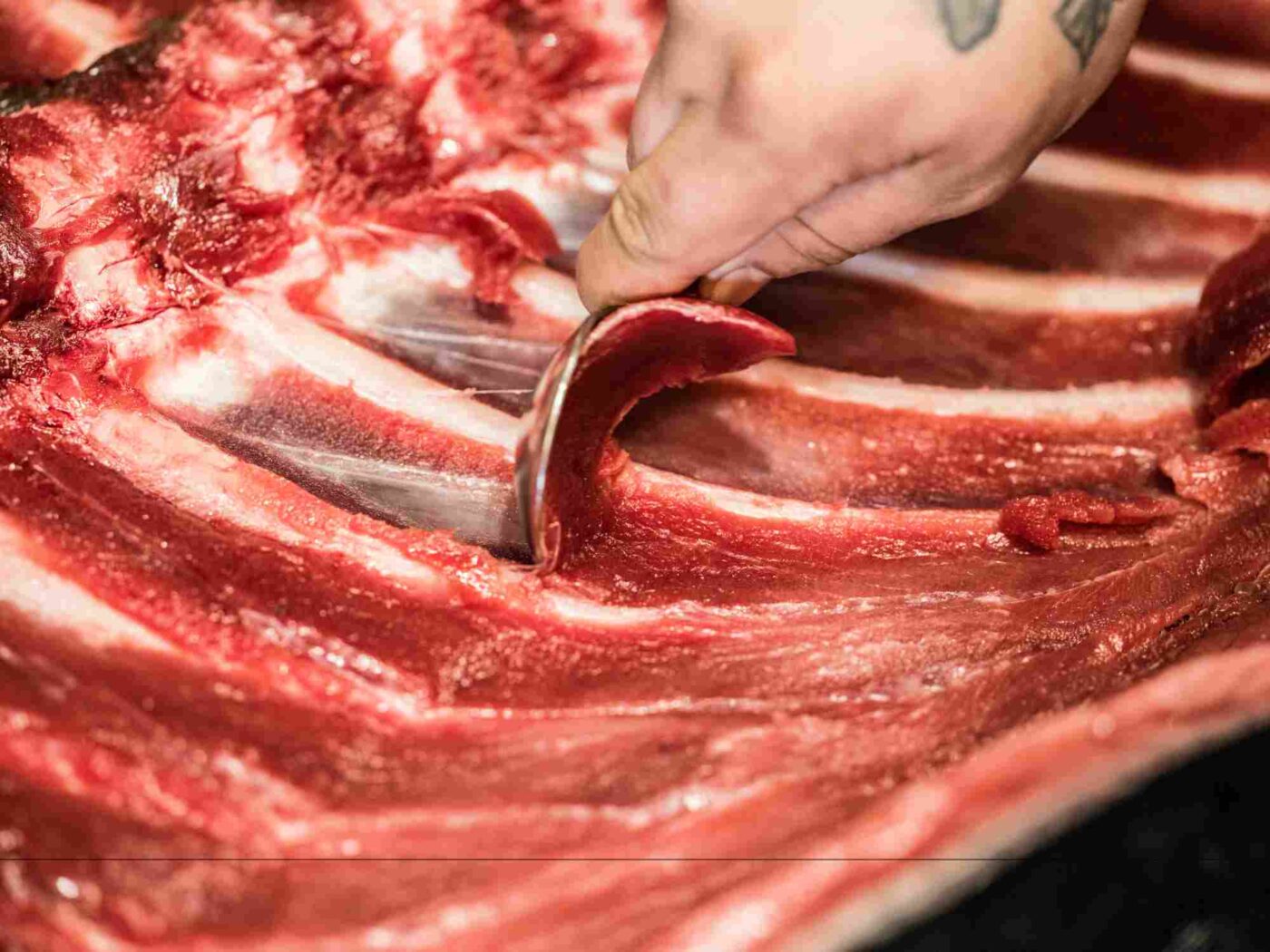
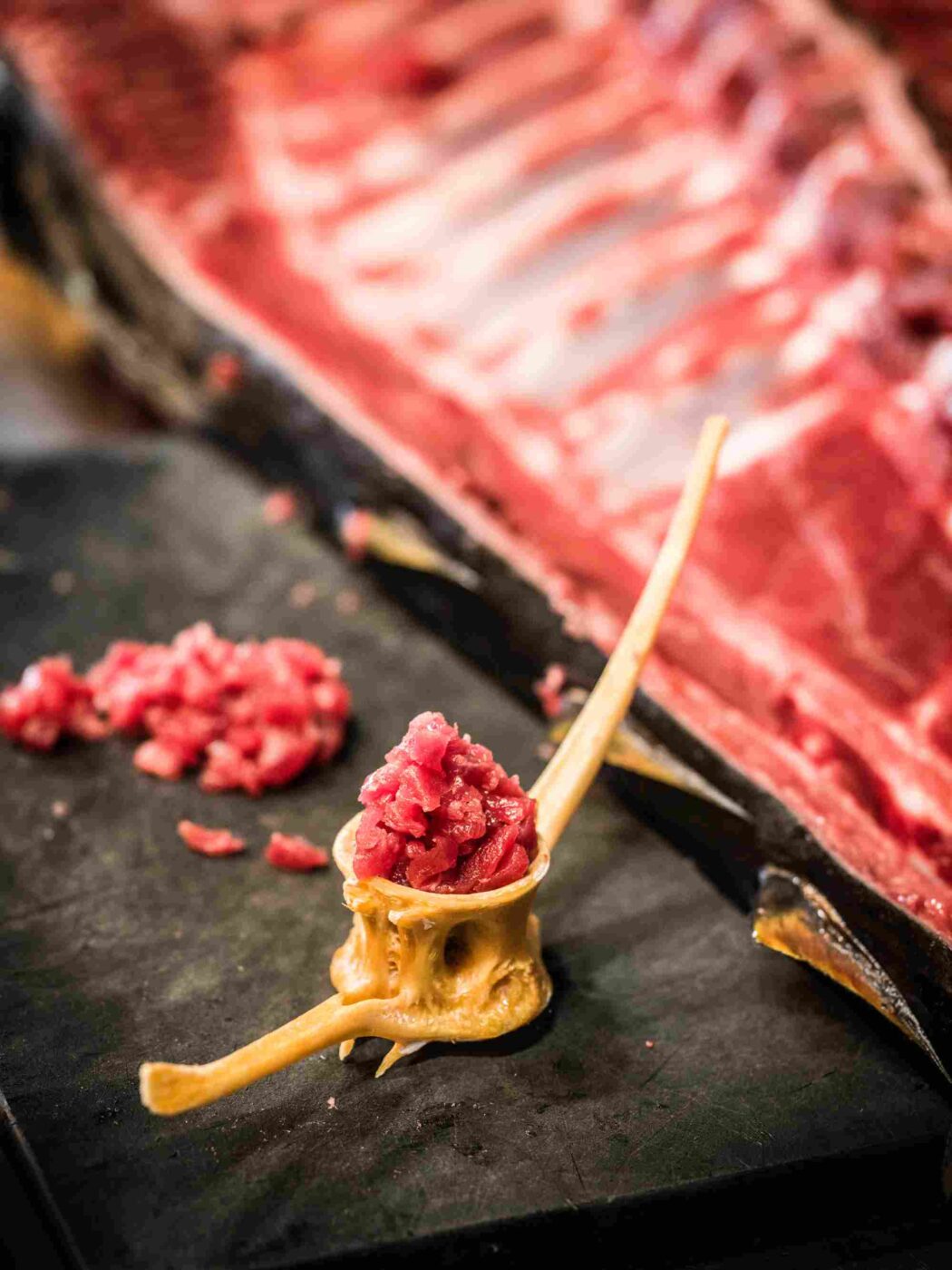
“My first contact with tuna was the yellowfin, which is so completely different. In Colombia it’s used in stews, ceviches, fried… For me this is the cow of the sea, a truly extraordinary animal, and you can’t treat it like a fish. I like everything about it. The bones, the scales, the marrow… We do a demi-glace with the skin which is just like a beef stock. It’s worth ageing the tuna for a couple of weeks; it dries out and becomes really creamy. That way the belly reminds you of the very best acorn-fed ham, with that touch of piquancy in the throat,” according to our Colombian friend, who now sees himself as a native of Murcia. “I emigrated here when I was 10 years old. This is my home now,” he adds.
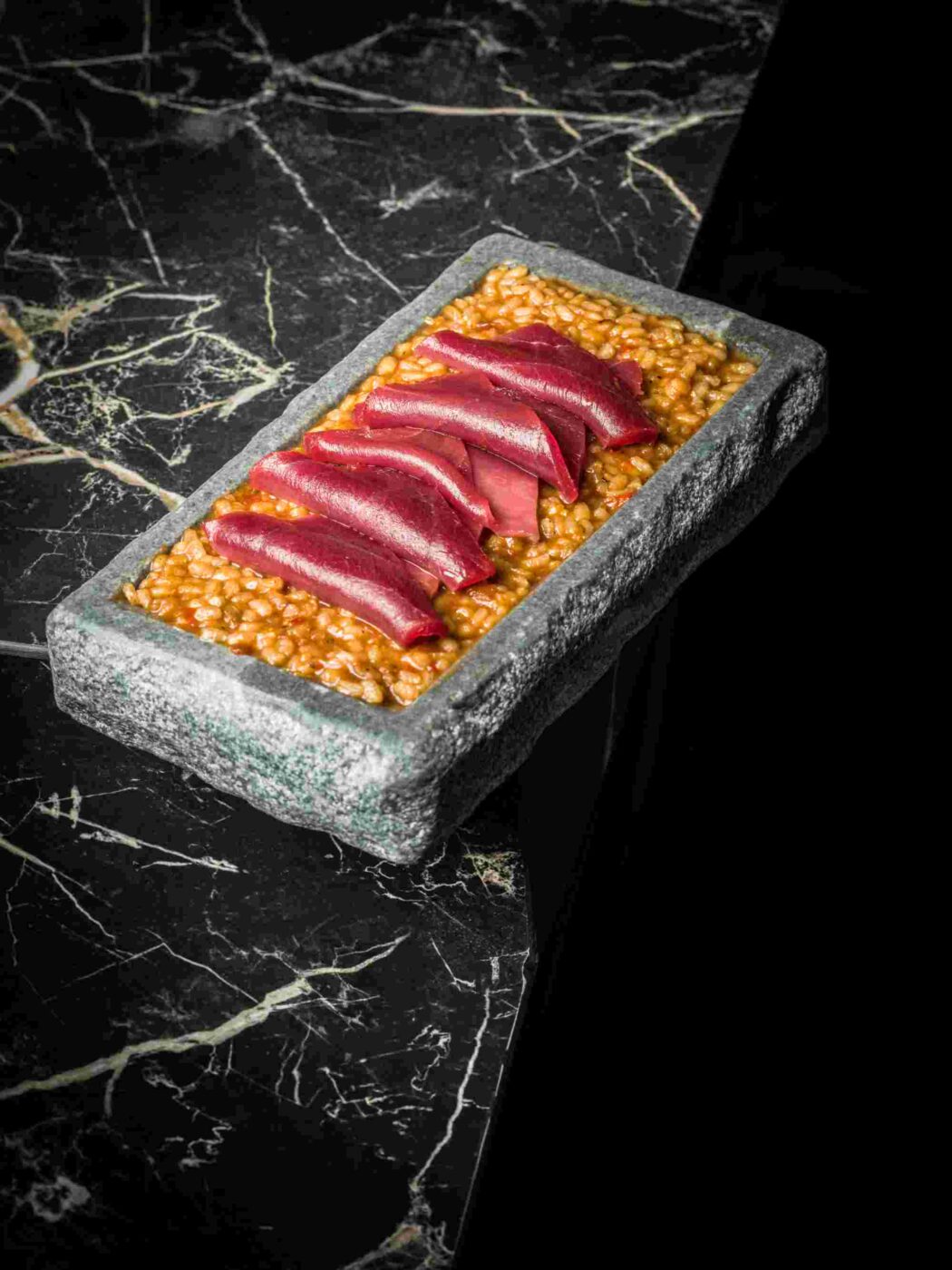
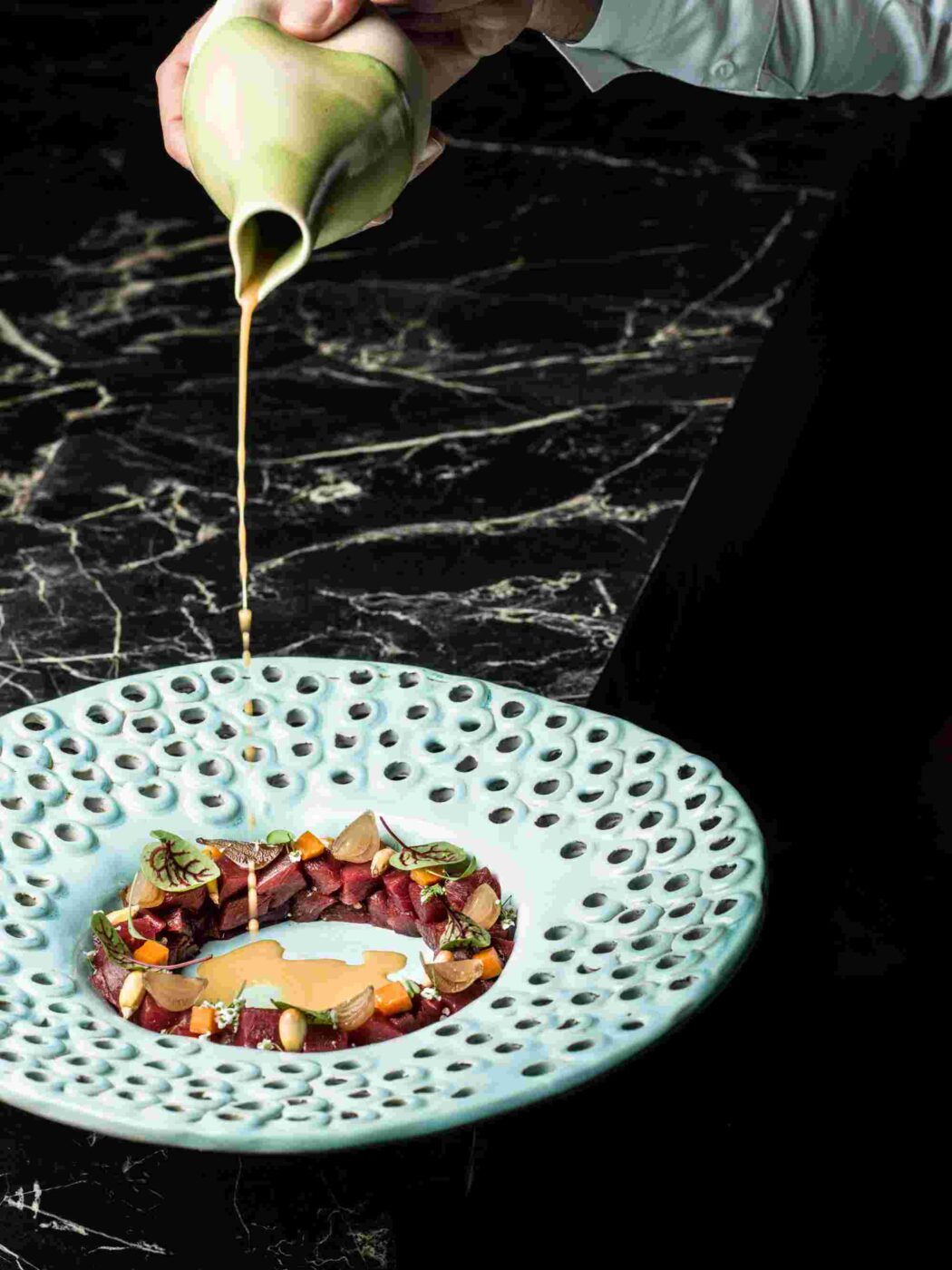
With skill and concentration, he tames and adjusts the flames on his Basque grill, where two hocks glazed in bluefin stock are cooking. He slices up and arranges an 11-kilo tuna back cheek, with which he also poses for the photographer’s lens, as if it were light as a feather. We are served a dish of rice cooked over vine wood, cooked in the tuna demi-glace stock, with a light sofrito of sweet peppers and tomato. A wonderful dish without too much acidity from the fish, but instead achieving a long, balanced aftertaste.
There is also time to pair this carousel with cocktails such as the Bloody Hannibal, made with smoked cherry tomatoes, the Old Colombian or the Espresso Martini, conjured up by young Javier de la Asunción.
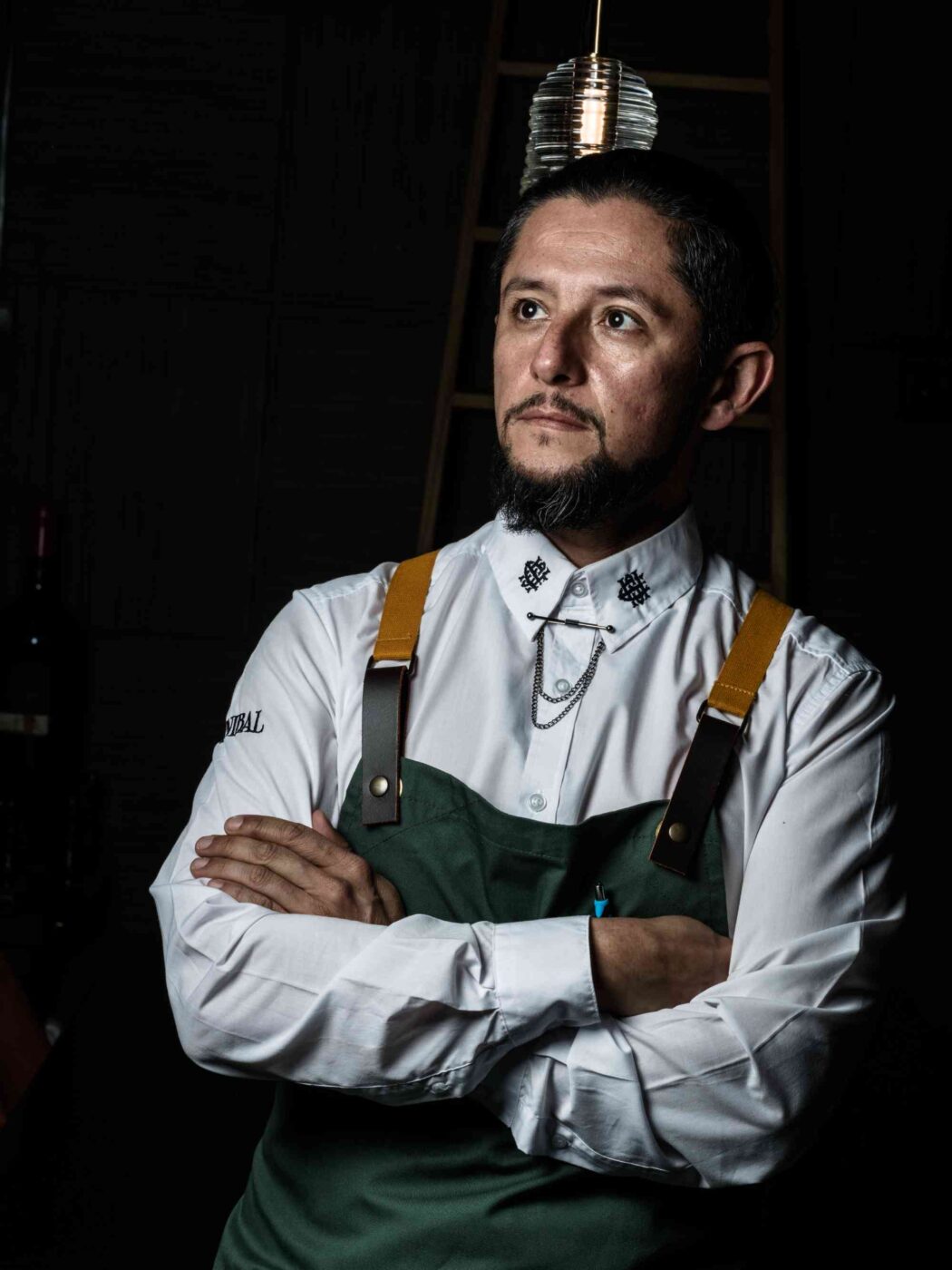
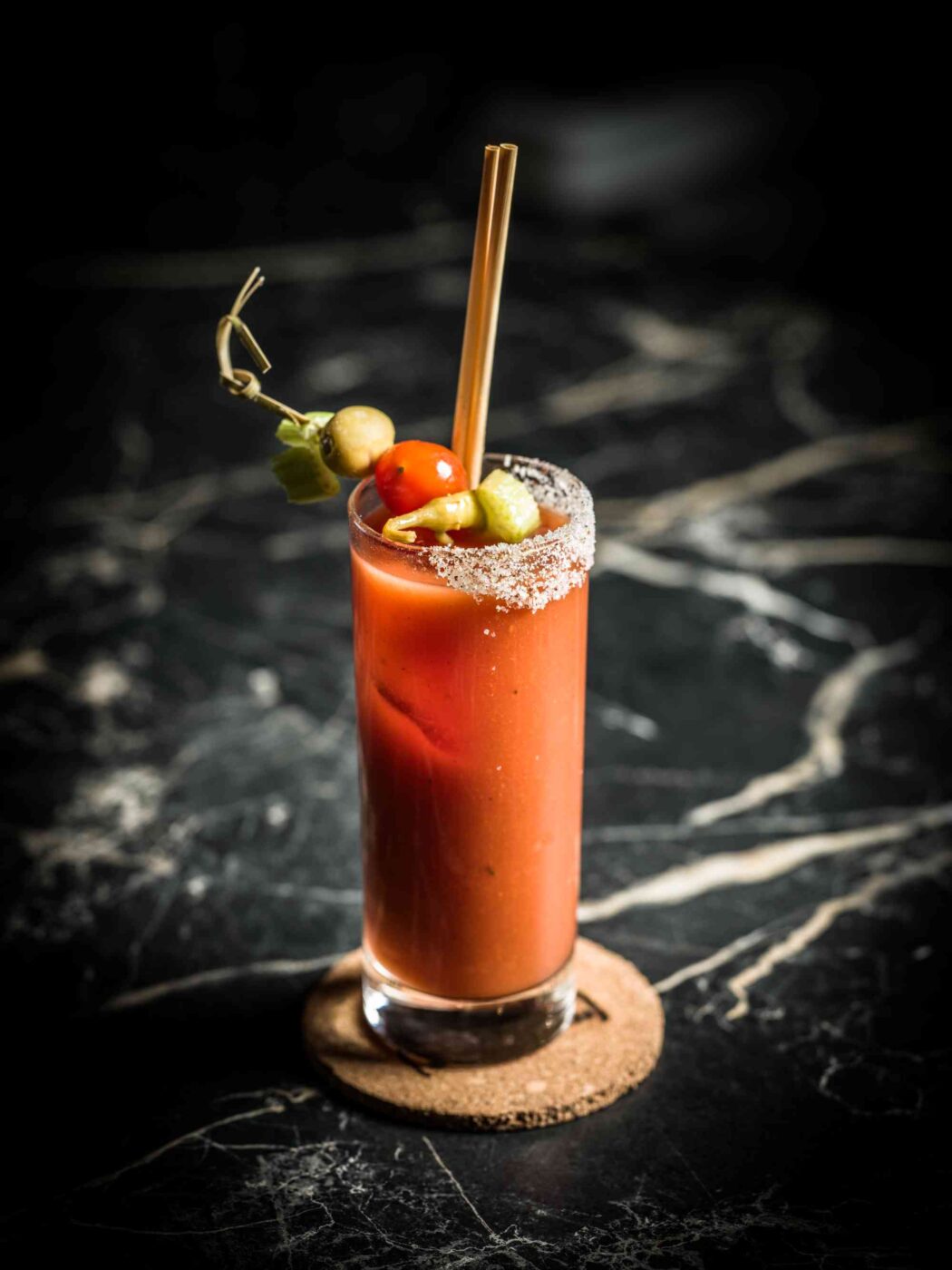
To round off the menu, puff pastry with a creamy filling and diced mango. And even torrijas, French toast, oozing goodness. “We aim to be a bit unusual, do things differently. I plan to do a ronqueo tuna butchery here on the terrace, but I would like to take the theatrical side of it a bit further, with a violinist playing alongside, while people eat in silence. It would be great to hear an instrument like a long Chinese violin, with that really distinctive, piercing sound”.
